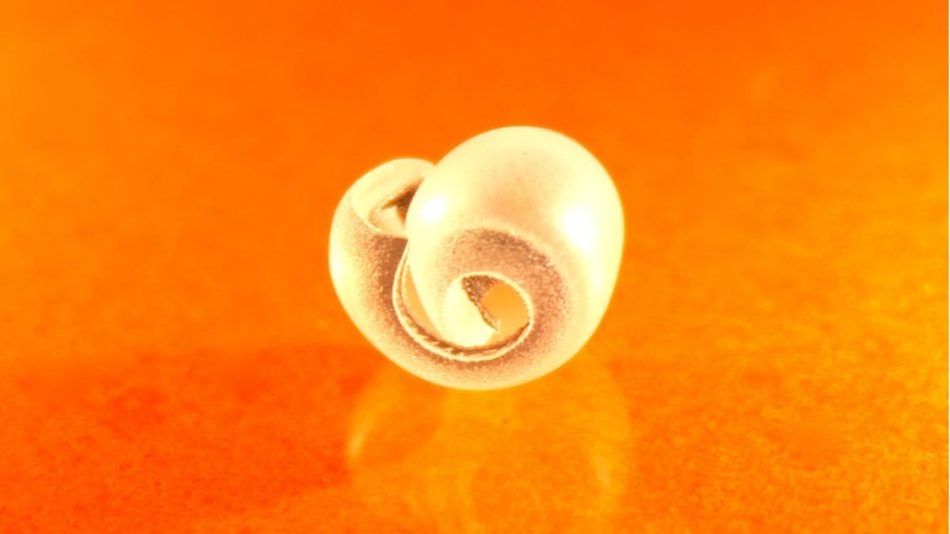Mar 23 2017
 (Credit: NC State University)
(Credit: NC State University)
A team of researchers at North Carolina State University have developed a method that uses light to make two-dimensional (2D) plastic sheets curve into three-dimensional (3D) structures, such as tubes, spheres, or bowls.
This study is based on past work by the same research team, which analyzed self-folding 3D structures. The key progress achieved currently is that instead of having the plastic fold along sharp lines – into polygonal shapes such as pyramids or cubes– the plastics bend and curve.
Researchers Michael Dickey, a professor of chemical and biomolecular engineering at NC State, and Jan Genzer, the S. Frank and Doris Culberson Distinguished Professor in the same department, were front runners in the domain of self-folding 3D structures.
In their ground-breaking 2011 paper, the team defined a method in which a conventional inkjet printer is employed to print bold black lines onto a pre-strained plastic sheet. Next the plastic sheet was cut into a specific pattern and positioned under an infrared light, such as a heat lamp.
It was observed that more energy was absorbed by the printed lines from the infrared light than the rest of the material, resulting in the plastic becoming hot and contracting – forming a hinge that folded the sheets into 3D shapes. By changing the width of the printed lines, or hinges, the research team was able to alter how far – and how fast – each hinge folds.
The method is compatible with commercial printing methods, such as roll-to-roll printing, screen printing, and inkjet printing, that are low-cost and high-throughput but fundamentally 2D.
But currently they are using a similar method to achieve a very different result.
By controlling the number of lines and the distribution of ink on the surface of the material, we can produce any number of curved shapes. All of the shapes use the same amount of ink; it’s simply a matter of where the ink is applied on the plastic.
Michael Dickey, Professor, NC State
“Our work was inspired by nature, because natural shapes rarely incorporate crisp folds, instead opting for curvature,” says Amber Hubbard, a Ph.D. student at NC State and the paper’s co-lead author. “And we found that, in order to make functional objects, we often needed to use a combination of curved and folded shapes.
“Other researchers have developed techniques for creating self-curving materials, but they did this using soft materials, such as hydrogels,” Hubbard adds. “Our work is the first attempt to accomplish the same using thermoplastics – which are stronger and stiffer than the soft materials. That makes them more attractive for use in performing some practical actions, such as gripping an object.”
The materials we’re working with also hold their shape, even after the light is removed. That’s an advantage, because soft materials change shape only when exposed to a solvent, and once they are removed from the solvent they lose their shape.
Russell Mailen, Ph.D. Student, NC State
The researchers have also built a computational model that can be used to envisage the 3D shape that will be created by any given printing pattern.
“One of our goals is to fine-tune this model, which Mailen developed,” Genzer, co-corresponding author, states. “Ultimately, we’d like to be able to input a desired 3D shape into the model and have it create a pattern that we can print and produce.”
The research paper, “Controllable curvature from planar polymer sheets in response to light,” is published in the Royal Society of Chemistry journal Soft Matter and was chosen by the journal to be featured on the cover. The paper was co-authored by Mohammed Zikry, the Zan Prevost Smith Distinguished Professor of Mechanical and Aerospace Engineering at NC State. The research was supported by the National Science Foundation under grants 1240438 and DGE-1252376.